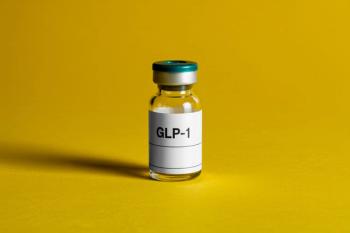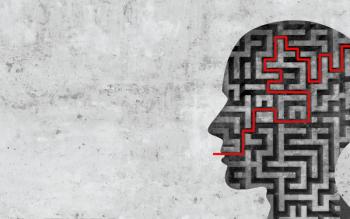
- Psychiatric Times Vol 24 No 14
- Volume 24
- Issue 14
Comorbidity and Psychiatric Disorders: Support or Hindrance for Psychiatric Care?
The revolution inherent in the move from DSM-II to DSM-III primarily involved a growing emphasis on comorbidity. For several decades before DSM-III, the emphasis had been on diagnostic economy: fewer diagnoses were considered more elegant, more accurate, and more useful in guiding care.
The revolution inherent in the move from DSM-II to DSM-III primarily involved a growing emphasis on comorbidity. For several decades before DSM-III, the emphasis had been on diagnostic economy: fewer diagnoses were considered more elegant, more accurate, and more useful in guiding care. The shift to DSM-III was based less on these theory-driven values and more on the belief (and undoubtedly, the hope) that descriptive diagnoses, no matter their number, would depict patients' psychopathological conditions more accurately, provide more accurate prognoses, and guide care more safely and effectively.
The 5 articles in this Special Report provide varying perspectives on the use of comorbidity thinking in patient care. In the first article, "The Conundrum of Psychiatric Comorbidity," Tew and Pincus explore the day-to-day problems that result from informing patients about multiple diagnoses. Since more than half of the patients in clinical settings meet DSM criteria for more than one psychiatric disorder, the symptoms of which often overlap considerably, the issue is a practi-cal one. The number of combinations possible for co-occurrence of any 2 diagnoses is large; for example, out of 25 Axis I conditions the possible combinations would be 25 3 24, or 600. For 3 diagnoses, the number is 13,800. Even if we consider a hierarchy of most likely combinations, a patient with 2 diagnoses could have scores of combinations.
Furthermore, we know relatively little about the epidemiology, genetics, prognosis, and care of the several most common combinations. Adding Axis II personality diagnoses to the mix further complicates the situation. The authors argue for greater lumping together of diagnoses, so as to reduce the chaos imposed by too many combinations of comorbidity. No matter what your own take on this issue is, this article will facilitate your understanding and goad your thinking on the concept of comorbidity and our diagnostic system. If you don't have an opinion on this important challenge for psychiatry, a careful reading may help you develop one.
The article "Understanding Comorbid Depression and Anxiety" incorporates both the synchronic (or cross-sectional) issues inherent in comorbid anxiety-depression disorders and the diachronic (or longitudinal) issues in which earlier onset of one disorder often leads to later onset of the other disorder. Beginning with basic research, Cameron reviews the neuro-, endocrine-, and cardio-physiology of anxiety and mood disorders. On the basis of his own research, he recommends differing treatment approaches for different patterns of comorbidity.
The article builds a rationale for selecting pharmacotherapies and psychotherapies that address the physiological malfunctions of the patient's comorbid disorder. The case report underscores the importance of knowing the fam- ily comorbidity history as well as the patient's psychiatric history when making therapeutic choices. This physiological model, while still in its evaluative stage, offers promise that enhanced basic understanding of comorbid disorders will alert us to the more common patterns of comorbid disorders (lending some order to the current chaos) and will guide us toward rational treatment planning (rather than the scattered approaches that now dominate).
In their article "HIV and Psychiatric Illness," Hammond and Treisman document the major contribution of untreated psychiatric disorders to the HIV pandemic. These disorders include substance abuse, hypomania and mania, psychosis, as well as homelessness, unemployment, and marital breakup due to a psychiatric disorder. In addition, HIV infection adds to psychiatric disorder through HIV- induced depression, psychosis, and even anxiety disorders. In an era of epidemic HIV infection, as clinicians and opinion leaders, we need to grasp and promul- gate this information.
"Lyme Disease, Comorbid Tick-Borne Diseases, and Neuropsychiatric Disorders" builds on the fact that most psychiatrists in areas where Lyme disease is endemic have encountered well-documented cases with fatigue, depression, and even cognitive decline. Bransfield stresses the potential role of Lyme and other infectious diseases in producing an array of psychiatric presentations through possible insults to specific brain regions or neurotransmitter systems. The importance of antibiotics, as well as the potential for Herxheimer reactions to antibiotics, receives due attention from the author, who lists an array of psychotropic interventions for sundry neuropsychiatric deficits. Controversies and obstacles in establishing these clinical diagnoses are well covered.
The article "Anxiety and Depression in a Psychiatrically Informed Pain Medicine Practice" underscores certain idiosyncratic aspects of a clinic staffed by a psychiatrist, a neurosurgeon, 3 nurses, and a coordinator. Nowadays, pain clinics and practitioners who specialize in chronic, disabling pain are increasingly becoming available. Workman and Hendrix answer some critical questions: Whom should we refer to these clinics and practitioners? What can we and our patients expect following referral? Because programs, clinics, and practitioners vary over a spectrum, this overview of a clinical model provides a concrete example of one approach. At the same time, the article covers topics and themes that prevail in almost all chronic pain programs, ie, work injury, forensics, common psychiatric comorbidities, use of opioids and other medications, emphasis on function, and development of a staff philosophy built on shared goals and approaches. Two case studies illustrate the special roles that psychiatrists can play in chronic pain programs.
Regardless of your role and niche within the psychiatric community, modern concepts regarding psychiatric comorbidity enter into your day-to-day practice in one way or another. These articles provide a valuable entrée to the complexity, rigors, and opportunities surrounding this evolving concept. I hope that you will take away, as I have, an enhanced understanding of their effects on our daily efforts, be they in the clinic, classroom, or laboratory.
Articles in this issue
almost 18 years ago
Treating Catatonia in Autismabout 18 years ago
New Drug Evaluation Workshops Focus on Improving Psychiatric Researchabout 18 years ago
Antidepressants Not Linked to Adult Suicideabout 18 years ago
Correctional Psychiatry: Room for Improvementabout 18 years ago
Making Psychotherapy Work: Collaborating Effectively With Your Patientabout 18 years ago
Ethics in Psychotherapy and Counseling: A Practical Guide, 3rd ed.about 18 years ago
Confessionabout 18 years ago
A Reluctant Journey Into Consciousnessabout 18 years ago
Psychiatric Tribalismabout 18 years ago
Child and Adolescent Clinical Psychopharmacology, 4th ed.Newsletter
Receive trusted psychiatric news, expert analysis, and clinical insights — subscribe today to support your practice and your patients.













